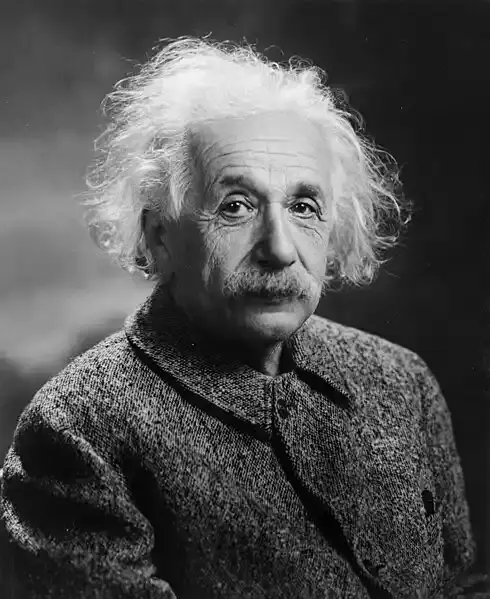Characteristics of scientists who have won Nobel Prizes
The Nobel Prize, founded by Alfred Nobel in 1895, is one of the most prestigious awards in the world. The prize has been awarded annually since 1901, in recognition of humanity's outstanding contributions in various fields, including physics, chemistry, medicine, literature, peace and, most recently, economics. The award celebrates not only pioneering scientific achievements, but also the individuals behind these discoveries, and recognizes their intellectual prowess, creativity and perseverance. Over time, patterns emerged regarding the traits and qualities that distinguished the scientists who won this coveted award. This article explores the history of the Nobel Prize, the criteria for awarding it, the scientific disciplines recognized, the number of laureates, and the traits and qualities common to Nobel laureates, while also advising those seeking to reach the pinnacle of scientific achievement.
Recommend
Show key points
- The Nobel Prize, established in 1895 by Alfred Nobel, honors individuals whose work has significantly benefited humanity across several disciplines.
- Since its first awards in 1901, the Nobel Prize has grown into a symbol of ultimate excellence in scientific, literary, and humanitarian achievements.
- Scientific Nobel Prizes are awarded in physics, chemistry, and physiology or medicine, recognizing discoveries that revolutionize understanding or improve human life.
- ADVERTISEMENT
- More than 900 individuals have received Nobel Prizes in scientific categories, often as part of collaborative efforts limited to a maximum of three recipients per field per year.
- Nobel laureates often exhibit traits such as deep curiosity, innovative thinking, perseverance through challenges, and a strong commitment to collaborative research.
- Distinctive qualities like visionary thinking, risk-taking, meticulous research, and humility frequently characterize scientists who succeed at the Nobel level.
- Aspiring Nobel candidates are encouraged to pursue meaningful, curiosity-driven work, embrace interdisciplinary collaboration, and focus on creating lasting contributions to humanity.
1. History of the Nobel Prize.

The Nobel Prize was founded through the last will of Alfred Nobel, a Swedish chemist, engineer and inventor who is best known for inventing dynamite. In 1888, he published a premature obituary titled "The Merchant of Death is Dead" when Nobel's brother Ludwig died, prompting Alfred to reconsider his legacy. Determined to be remembered by people for his contributions that benefited humanity, he put most of his fortune aside to create Nobel Prizes. The first prizes were awarded in 1901 in five categories: physics, chemistry, medicine, literature and peace. The Sveriges Riksbank Prize in Economic Sciences was added in memory of Alfred Nobel in 1968.
Since its inception, the Nobel Prize has been recognized as the ultimate indicator of excellence and influence in the fields it receives. Over the years, the award has grown in stature, with laureates among the greatest minds in history, contributing transformative insights and innovations to society.
2. Criteria for awarding the Nobel Prize.
Nobel Prizes are awarded based on the original criteria established by Alfred Nobel himself: for work that "provided the greatest benefit to mankind." In the case of scientific disciplines - physics, chemistry, medicine - the Nobel committees evaluate the discoveries or achievements of candidates in terms of their originality, relevance and lasting impact on scientific knowledge or human welfare. Nominations are submitted by an invited group of experts in the respective fields, including past laureates, and are evaluated by committees composed of experts appointed by Nobel institutions such as the Royal Swedish Academy of Sciences.
One of the decisive criteria for winning the Nobel Prize is that the contribution has passed the test of time and proved its value over several years. This delay allows the committees to ensure that the discovery holds long-term significance. Another key consideration is the extent to which the work opens up new areas or possibilities within its discipline.
3. Scientific disciplines awarded by the Nobel Prize.

Nobel Scientific Prizes are awarded in three main areas:
A. Physics: Honors discoveries that fundamentally changed the understanding of the natural world. Notable laureates include Albert Einstein (for photoelectric effect) and Marie Curie (for her research on radiation).
B. Chemistry: Honors contributions that enhance understanding of chemical processes, or lead to important practical applications. Notable laureates include Linus Pauling (for chemical bonding) and Dorothy Cravot Hodgkin (for X-ray crystallography).
c. Physiology or Medicine: awarded for discoveries that significantly advance medical knowledge or therapeutic techniques. Notable laureates include Alexander Fleming (for penicillin) and Barbara McClintock (for the discovery of moving genetic elements).
4. The number of scientists who received the Nobel Prize.

As of 2023, Nobel Prizes in physics, chemistry, physiology or medicine have been awarded to more than 900 individuals, many of whom share the prize with others for their collaborative work. Each year, a maximum of three individuals can share the award in any given field, which means that the total number of laureates is gradually growing. While the exact number varies annually, a large proportion of the award-winning research stems from interdisciplinary collaborations that bring together scientists from different fields.
5. Common traits among Nobel laureates.
Despite the diversity of scientific disciplines and the unique nature of each winner's discovery, several common features among Nobel laureates can be identified:
A. Curiosity and passion for discovery: Nobel laureates are often characterized by deep curiosity about how the world works. They are driven by a desire to discover new knowledge, solve puzzles and push the boundaries of their own scientific fields.
B. Perseverance and Flexibility: Scientific research is often a long and arduous process, with many obstacles and failures along the way. Nobel laureates tend to show remarkable perseverance, keeping them focused and determined in the face of setbacks.
c. Creativity and innovation: Nobel laureates often think outside the box, devise new approaches to long-term problems, or make unexpected connections between different fields of science. This creative thinking is essential for groundbreaking discoveries.
d. Cooperation and teamwork: Many Nobel laureates work in teams or partnerships. Collaborative efforts often lead to the mutual synergy of ideas from different scientific backgrounds, leading to more comprehensive discoveries.
c. Impact and practical significance: Research recognized by the Nobel Prize often has profound implications for both science and society. Whether by promoting theoretical understanding or developing practical applications (such as medicine or technology), the work of Nobel laureates usually affects the wider human condition.
6. Traits of scientists who win Nobel Prizes.
In addition to these common traits, several hallmarks of Nobel laureates stand out:
A. Intellectual curiosity: Nobel laureates have insatiable curiosity and constantly seek to understand the world around them. They do not content themselves with superficial answers but instead delve deeper into their fields of study.
B. Visionary thinking: Nobel laureates often have a vision for the future of their scientific field, and imagine possibilities beyond the current scientific landscape. They see potential where others may not, allowing them to pioneer new areas of research.
c. Risk tolerance: Many Nobel Prize-winning discoveries involve a degree of risk. Scientists who win the prize are often willing to pursue unconventional ideas, even in the face of skepticism from the wider scientific community.
d. Accuracy: Nobel laureates are known for their attention to detail and comprehensiveness in research. They conduct experiments with precision and care, often taking years or decades to gather conclusive evidence for their results.
c. Humility: Despite their achievements, many Nobel laureates remain humble, viewing their work as part of a larger scientific project. They understand that their contributions are based on the work of others and are quick to give credit to collaborators and ancestors.
7. Tips for scientists seeking to win Nobel Prizes
While the path to winning the Nobel Prize is neither clear nor guaranteed, there are several key tips that can guide scientists aspiring to this level of recognition:
A. Pursuing genuine curiosity: Focus on what really interests rather than chasing trends. Groundbreaking discoveries often arise from long-term emotional investigations.
B. Think big and take risks: Not being afraid to tackle big questions, even if they seem impossible at first. Taking risks and thinking outside the box is often rewarded in science.
c. Interdisciplinary collaboration: Many of the most important scientific breakthroughs come from interdisciplinary collaboration. Building a diverse team of researchers from different fields can lead to more comprehensive and creative results.
d. Commitment to the Long Road: Nobel Prize-winning research is often accompanied by a long-term endeavor, sometimes taking decades to accomplish. Patience and perseverance are extremely important.
c. Contributing to the common good: Focus on the ultimate goal of benefiting humanity. Nobel laureate discoveries often have a direct positive impact on society, whether through technological innovation, medical advances, or contributions to peace.
The Nobel Prize represents the pinnacle of scientific achievement, recognizing individuals who have made profound contributions to humanity. Although there is no single formula for winning the Nobel Prize, its laureates tend to share certain traits, such as intellectual curiosity, perseverance, creativity, and a passion for improving the world. Aspiring scientists can learn from these traits by committing to rigorous, innovative and impactful research. By doing so, they not only increase their chances of winning the prize, but also meaningfully contribute to the advancement of science and the betterment of society.
![]()
Polar bears and climate change: the threatened future of Arctic icons
Polar bears, majestic symbols of the Arctic, face a deeply troubling future as climate change melts their icy habitat, disrupts their food sources, and puts pregnant females at greater risk. With shrinking ice and rising temperatures, their survival grows harder, making urgent global action vital to protect these stunning creatures. more- ADVERTISEMENT
![]()
Turkey: The country that heals hearts and steals souls
From Istanbul’s magic to Cappadocia’s dreamy skies, Turkey stirs the soul with ancient wonders, warm-hearted people, and unforgettable beauty. More than a destination, it's a journey through time and emotion that stays with you long after you’ve gone. more- ADVERTISEMENT
![]()
The Nile: Africa's lifeline and the longest river in the world
The Nile River, Africa’s lifeline, flows through eleven countries and supports over 450 million people. Its mysterious origins, vital role in agriculture, and the rising political tensions over water use make it a symbol of both unity and conflict, highlighting the urgent need for cooperation and sustainable management. more- ADVERTISEMENT
![]()
Embracing stupidity: the hidden value of our mistakes
Embracing stupidity: the hidden value of our mistakes more- ADVERTISEMENT
![]()
Surprising fact: The environmental impact of beef outweighs cars
Cows may seem innocent, but their burps and farts pack a punch—methane from cattle is 23 times stronger than CO₂ and causes major environmental harm. From deforestation to acid rain and massive emissions, beef production beats cars in damage. Eating less beef could seriously help the planet. more- ADVERTISEMENT
![]()
We paint it wrong: the sun is not orange
The sun isn’t just orange—it’s a masterpiece of shifting colors. From pale reds and soft blues at dawn to radiant whites at noon, its beauty changes with time and weather. Films and culture fooled us, but nature tells a richer, truer story full of color and mystery. more- ADVERTISEMENT
![]()
Success Guide - How to leave any bad habit?
Getting rid of bad habits takes time, effort, and patience. Focus on one habit at a time, understand your triggers, and replace the habit with a positive alternative. Stay realistic, reward progress, and don’t be discouraged by setbacks—just get back on track and keep going. more- ADVERTISEMENT
![]()
The Search for the Lost Temple of Artemis: A Journey Through Time and Secrets
Hunting for the Lost Temple of Artemis-A Journey Through Time and Mystery more- ADVERTISEMENT
![]()
The most expensive mistakes in history
The most expensive mistakes in history more- ADVERTISEMENT
![]()
The Genius of Nature: 8 Amazing Technological Innovations Inspired by Nature
Nature has sparked incredible inventions—from quieter express trains shaped like kingfishers to painless needles modeled after mosquitoes. Even butterfly wings help improve solar cells. These smart ideas not only improve our daily lives but also open big doors in tech and business. more- ADVERTISEMENT





















